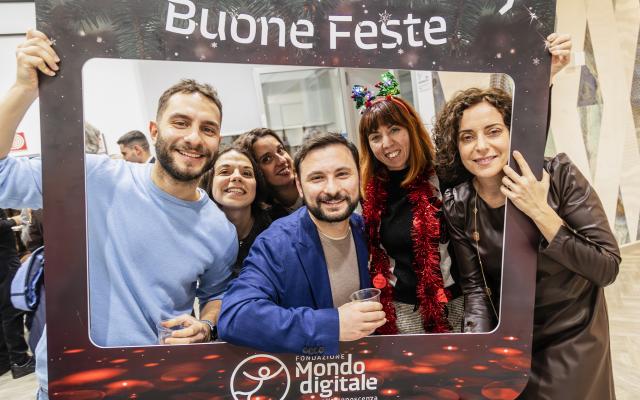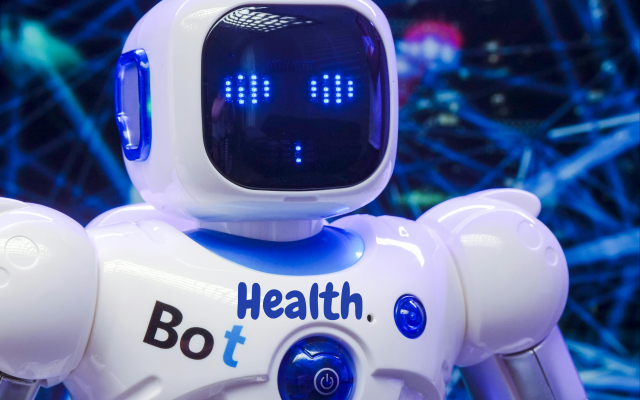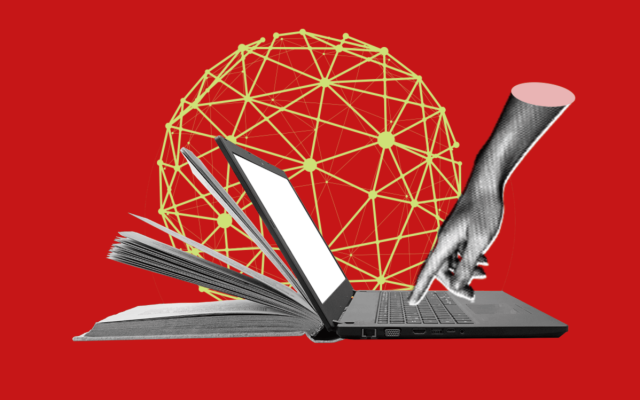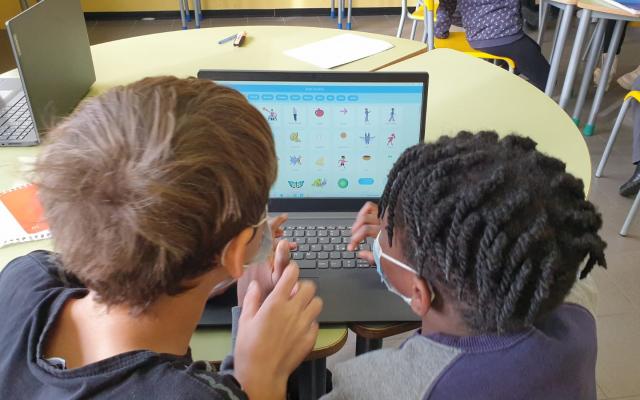Alessandra Scamardella from the Istituto comprensivo Melissa Bassi in Tor Bella Monaca
Thinking that using a smartphone means already participating in digital opportunities is like looking at the finger and not at the moon, as the Italian proverb recites. Infrastructure is a means, not an end! Alessandra Scamardella, School Administrator of Istituto comprensivo Melissa Bassi in Tor Bella Monaca, one of the schools participating in Project Smart & Heart Rome.
The Melissa Bassi School is in the second year of the programme which, after the kick-off and launch of activities at the Innovation Gym, is preparing to open up to the neighbourhood with accompaniment to sustainability. The next step, therefore, is to leverage the Innovation Gym to guarantee access to new forms of knowledge for families and the neighbourhood.
The keywords of Project Smart & Heart Rome are "lifelong education of citizens, at all ages", "curricular innovation", "orientation and preparation of young people for the great challenges of our time", "sustainability", "employment" and "digital transition.” So, how can the school interest all of society in such complex values?
We are at the beginning of our collaboration with the Fondazione Mondo Digitale, however we can already see that the school will play an important role in the cultural growth of families and the neighbourhood. A project like Smart & Heart Rome starts on issues that are fundamental for the growth of children, an extension of programmes for curricular innovation through constant activity over time, stepping beyond the concept of the sporadic laboratory or single event. The term itself, "Innovation Gym," does not refer to a sporadic lab, but to an environment for continuous practice.
When digitization and the concepts related to it are an integral part of pupils' learning, we can think of the subsequent active involvement of families. Only in this way is it possible to engage a wider audience, the complete community. The school can be a good starting point, but it cannot act as a driving force by itself. It needs to collaborate with subjects that are active in the area and work to achieve inclusion. This is demonstrated by the very setting of the Innovation Gym, a reality that is part of everyday life and is constantly growing through collaborative training projects with teachers and students. On this path, we can extend the school to parents, and we will soon do so with dedicated activities. As you can see, it is a question of several steps, starting with a solid catalogue that integrates project activities such as those of Project Smart & Heart.
Can the decision to join Smart & Heart Rome provide the neighbourhood with important opportunities, also considering that you are located in a suburb and not in a central area where these opportunities are probably stronger and already rooted?
Compared to city centres, which are already poles of cultural attraction in themselves, there is a great need for stimulating action in areas that are deprived of cultural stimuli and delocalised. It is a problem of geographical distance, which makes a peripheral area detached from the city to which it belongs, creating differences in cultural orientation. Technological tools are now widespread; therefore, it is a problem of cultural tools suitable for their use. The right framework provides access to the universe of opportunities related to digital tools, because it provides the keys for orientation and navigation amongst the content. Introducing inclusive digital courses is important, because territories like ours often lack the correct approach to new technology. A practical example: school innovation gyms allow us to provide many non-Italian-speaking families with the opportunity to speed up the recovery phase from their initial disorientation. The effect is to speed up inclusion and leave no one behind. The technological infrastructure that is part of these projects, combined with the role of the school, facilitates participation. The road has been marked. Now, it is necessary to continue embracing the territory.
Thinking instead of male and female students, what stimuli are provided by digital tools and environmental issues?
There certainly is a strong stimulus towards new approaches and tools, not for their own sake but for the access it provides to study and knowledge that are currently perceived as far away. Dealing with a generation of digital natives does not in itself imply an acquired digital culture or methodology! Familiarity with smartphones does not always help with an educational path. On the other hand, access to this universe through guides and projects provides a medium and long-term impact. “Knowing how to use a smartphone” does not mean having a conscious digital literacy. Activities like learning to code with college students allows children to replicate classroom activities at a later stage. When knowledge is oriented, it makes you forget the tool and look at the result, at the goal.




